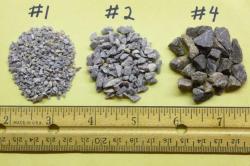synef said:What is the best soil mix for indoors plants?
Thank you
Michael
Hi Michael. Welcome to NGA!
Short answer: something that drains quickly so that air can flow back into the soil mix and diffuse through it, once enough water flows out the bottom holes.
If you buy a potting mix, there are "professional" brands that are a little pricy and tend to come in huge bales of 3.8 cubic feet each. Pro-Mix, Fafard, Sunshine and Black Kow are some "pro" brands.
If you buy a cheaper mix that doesn't drain as fast and is not as well aerated, you should add something like Perlite, grit, screened crushed stone, or screened evergreen bark shreds to "open it up".
Long answer:
I think the pro mixes are mostly peat-based, but with
a good grade of sphagnum moss plus amendments to open it up more, not just the thin brown dusty "peat moss" that packs down densely and can be hard to re-wet once dry. The "pro" mixes are careful to include ingredients to keep them "lofted" or "open" or "airy".
That is crucial in pots, since potted soil mixes tend to pack down so densely that they hold or retain too much water. "Too much water" means that all the small crevices and too many medium-size crevices and openings fill with water and are then held in place by capillary force.
Then they also have a "perched water layer" that can completely flood the bottom few inches in a pot.
Once the open spaces fill with water, air diffusion is slowed by a factor of 10,000!
(
http://garden.org/thread/view_... )
When air diffusion is slowed, the roots can't get the oxygen they need to live. They drown. Then rot.
That's why you want potting mix
so open that some of crevices, openings, air gaps or voids are
large enough that they still have some open space remaining
after capillary films and perched water try to fill them. Air diffusion can occur through the remaining open space.
It seems to be a good rule of thumb that, if excess water flows out the bottom quickly, there must have been enough open space that the roots can breath within a few minutes of watering.
If you don't buy a professional-quality potting mix, there are many brands that sell "stuff" they call potting mixes in big box stores like Home Depot and Lows. My experience with the HD near me is terrible. Lowes had some decent bagged bark products.
When I have some cheap potting mix, I "open it up" by mixing with grit or screened bark chunks and shreds. I like the shreds to be around 1-2 mm in small dimension, and up to 1/4 inch to 1/2 inch, depending on size of pot. If the bark is mostly chunks, not long shreds, I like them to be around 1/10 inch (2.5 mm). Much smaller than that, and they start holding too much water also.
(P.S. Since bark is REALLY cheap, and I can screen it myself, I mix 25-50% screened bark with an expensive potting mix, so that the mix in effect cost only 1/2 as much. And some things seem to grow pretty OK in mostly-bark.)
Other have told me that they can buy
almost any old potting mix from HD and get good results, for example with vegetables in big pots, outdoors.
Maybe that's a regional difference, or my HD has a mean-spirited garden manager, or
maybe I just over-water so much that I can't use ordinary cheap potting mixes. You'll have to see whether your plants drown and roots rot with any given potting mix ... but my thinking is, if I water heavily and DON'T see the water come right out the bottom, I should have lightened the mix more before holding the plants' roots under water.
